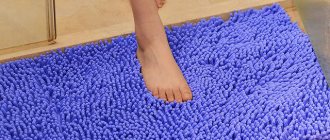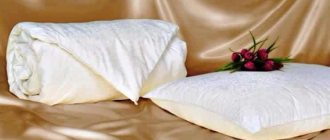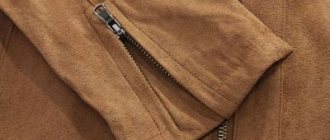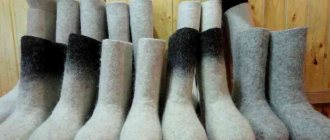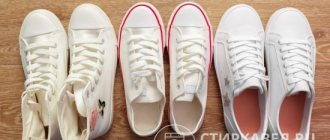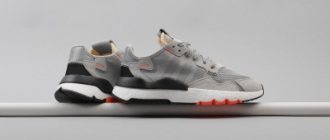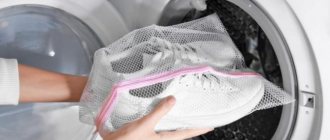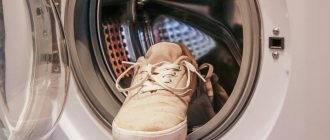Care instructions
- Regularly clean and disinfect the insoles of shoes or other types of footwear. So, cleaning is carried out once every two days, disinfection - twice a week. If you play sports in sneakers or walk around in shoes a lot, do it more often;
- For cleaning and disinfection, special compounds are used, medical alcohol, hydrogen peroxide, vinegar, baking soda, soap solution and other means. You can use a special deodorant for shoes, which will keep the inside of your shoes clean and fresh for a long time and give a light, pleasant aroma;
- It is recommended to clean old and worn insoles using several methods at once. First, the products must be washed in soapy water, then treated with soda, medical alcohol or other suitable means;
- Keep your feet and socks clean, as sweat and bacteria are the cause of unpleasant odors and dirty insoles. Wear cotton socks so they will absorb odor and sweat rather than your shoes;
- If the insoles still have an unpleasant odor after several washing and treatment procedures, it is better to throw away the products. It is also recommended to purchase a new pair if the white earbuds cannot be cleaned;
- Don't wear the same shoes every day. After every two wears, thoroughly dry the insoles and ventilate the shoes in a cool place, away from batteries, electrical appliances and direct sunlight;
- It is not recommended to machine wash fabric and leather inserts. It is advisable to use hand cleaning and washing with a regular soap solution. Orthopedic and gel insoles cannot be washed in a washing machine!
- To get rid of unpleasant odor, you can put shoe inserts in the freezer and leave for 1-2 days. Cold effectively kills bacteria and germs.
- Use an antifungal UV shoe dryer. Ultraviolet light destroys fungi, bacteria and unpleasant odors. Leave the shoes to dry overnight and in the morning you will find that the smell is gone.
Drying
Do not dry near heating devices or on radiators. It is forbidden to use a hair dryer on leather products; the material will crack and the cracks will become clogged with dirt.
Sneakers become deformed in the washing machine. The glue may melt.
A fan will help speed up the drying process. Cold air does not dry out the product. In a few hours at high speed, the sneakers will dry quickly.
An air conditioner works in the same way. It blows out cool air. Point at your shoes and wait.
The simplest and most famous way is to stuff it with paper. Use blank sheets rather than newspapers. Printing ink quickly transfers to the surface.
Silica gel works similarly to newspaper. They fill sneakers to the top. After a couple of hours, the silica gel will draw out all the moisture.
Care instructions
How to clean shoe insoles
Remove the insoles before cleaning. If they do not come off, try to unscrew the products or clean them directly in the shoes. The most accessible and easiest method is cleaning with soapy water. It is suitable for regular maintenance and for insoles that are not too dirty.
To clean the insoles of your shoes, mix half a liter of hot water with a teaspoon of liquid soap or dishwashing detergent. Alternatively, you can grate a bar of standard soap and mix it with hot water.
Dip a brush or cloth into the solution and clean each insole. Make sure that the products do not get too wet, otherwise they may become deformed, decrease in size or become uneven. Remove dirt from both sides with a cloth or brush, rinse with a cloth and clean water to remove any remaining soap.
If the inserts do not come out, it is convenient to clean the inserts with an old, unnecessary toothbrush or any brush with a long handle. After cleaning, dry the items at room temperature or in the fresh air. Only insert insoles into shoes when they are completely dry.
If the white insoles do not come off, use laundry soap. Thoroughly soap the earbuds on each side and brush them, then rinse off the soap and dry.
For cleaning, you can take a special cleaning foam for shoes. It is applied not only to shoes, boots, sandals or other pairs on the outside, but also on the inside, including the insole. Leave the composition for ten minutes so that it is absorbed. This treatment will ensure regular care and protect the products from unpleasant odors, bacterial growth, dirt and stains.
Standard fabric liners can be washed in the washing machine, but don't do it too often or they will quickly become unusable. Choose only delicate, gentle or gentle washing mode without spin. By the way, this mode is suitable for washing sneakers, fabric ballet shoes and sneakers. How to clean and wash Converse, sneakers or sneakers, see here.
Disinfection of insoles
Medical alcohol, vinegar, potassium permanganate or hydrogen peroxide can help disinfect insoles. Such compositions will kill unpleasant odors, eliminate dirt, bacteria and stains.
To scrub and disinfect linings, mix the selected product with half and half water and pour into a spray bottle. Spray the solution evenly on each side of the insole and wipe with a damp cloth. After treatment, wipe the product with a clean damp cloth and leave to dry.
You can also use baking soda to disinfect and eliminate bad odor bacteria. However, it will not remove stains and dirt like alcohol. This method is suitable for clean or lightly soiled insoles with an unpleasant odor. To clean, take a bag and fill it with baking soda. Place dry insoles inside, close the bag and shake.
Leave the bag with baking soda and insoles for six to ten hours, then take out the shoe inserts, shake the soda and leave for ten minutes. After this, you can wash it with a damp cloth and leave it to dry, or you can use it immediately and put it in your shoes without washing.
Cleaning
When choosing products for cleaning leather insoles, many people want to save money and are looking for cheap or folk remedies. However, it should be noted that not all options offered on store shelves are suitable for cleaning leather. The following products cannot be used:
- Various detergents.
- Soap contains alkali, which leads to changes in products. The skin may become hard or, on the contrary, soft.
- Acetone can leave white marks on both the inside and outside of shoes.
The most difficult part is cleaning the insoles, which are not removed from the shoes. But even for such cases, there are competent ways to clean flip-flops or other shoes where the insoles are sewn on. Here are some options:
- Hydrogen peroxide or a solution of potassium permanganate is applied to a cotton pad. The insole is wiped with a dampened disc.
- Cleaning can be done with any disinfectant, including alcohol.
- A good cleanser is rich baby cream.
- A more expensive but effective option are specialized products sold in stores.
Each of the above methods has both advantages and disadvantages. It all depends on the quality of the leather from which the shoes are made.
Characteristics of orthopedic insoles
Orthopedic insoles promote the correct formation of the arch of the foot, support weight, and prevent diseases of the musculoskeletal system. They reduce stress when walking after various injuries, help with foot defects, and reduce the load on the joints.
Orthopedic models are made from leather and polymers of the highest quality. You can find silicone and gel models. Silicone insoles provide a slight bounce when walking, which relaxes the tendons of the legs, improves blood circulation and reduces muscle fatigue. They provide additional comfort and cushioning.
Orthopedic shoe inserts are durable and wear-resistant, safe and hypoallergenic. They absorb excess moisture well and are characterized by high shock absorption and ventilation.
How to clean orthopedic insoles
Before purchasing orthopedic products, drop a little water on the surface. If it is immediately absorbed and does not accumulate on top, then it is a high-quality and suitable material. With proper care, orthopedic pads will last four to six months.
Orthopedic insoles can also be cleaned and washed using a soap solution. Under no circumstances should such products be washed in a washing machine, completely immersed in water, or dried using electrical appliances. Dry the earbuds only under natural conditions. Do not use bleach or boiling water for cleaning!
For leather products you can use a weak alcohol solution, for other materials - only soap. To clean silicone insoles, wash each side with a cloth and soapy water and warm water and dry, sticky side up.
What affects the service life
Orthopedic insoles, even with proper care, should be changed once every six months. Manufacturers of this type of device do not recommend wearing them for longer, since they will no longer be useful.
The service life is affected by proper care of orthopedic devices, as well as many other factors.
How quickly the product wears out depends on the person’s physical activity. If a woman wears shoes only to shops and on visits, the service life of course increases.
If boots with orthopedic insoles are used for hiking in the forest, traveling or playing sports, they will last less.
It also affects not only the intensity of wear, but also the weight of the patient.
The frame base does not deform and retains its functionality after six months. Insoles have to be changed due to wear and tear on the insoles and corrective elements.
Shoe and insoles care
It is important to regularly and promptly clean, air and dry your shoes. Cleaning is done after every wear. Wash your shoes, boots or shoes thoroughly with a damp cloth, clean with a dry microfiber cloth, dry and ventilate.
Follow proper cleaning, drying and storage instructions. Many materials do not like large amounts of moisture, exposure to ultraviolet radiation and electrical appliances, or large temperature changes. Never leave wet shoes after wearing them! Dry items under natural conditions.
We treat dry shoes with shoe polish or spray. For the inside and insoles, use a special foam or deodorant. After treatment, you should not immediately go outside. It is important that the compounds are absorbed and dry. How to dry shoes properly and quickly, read the link.
Types of sneakers
There is more than one type of sports shoes. They are classified depending on their purpose. There are sneakers for basketball, football, running, tennis, skateboarding, trekking, skateboarding and fitness.
Washing sneakers in a bag
They are also classified by fabric type:
- mesh sneakers;
- fabric;
- suede;
- made of nubuck;
- leather;
- on fur;
- leatherette
When washing, the type of sneakers does not really matter. You should focus on the type of material from which they are made.
